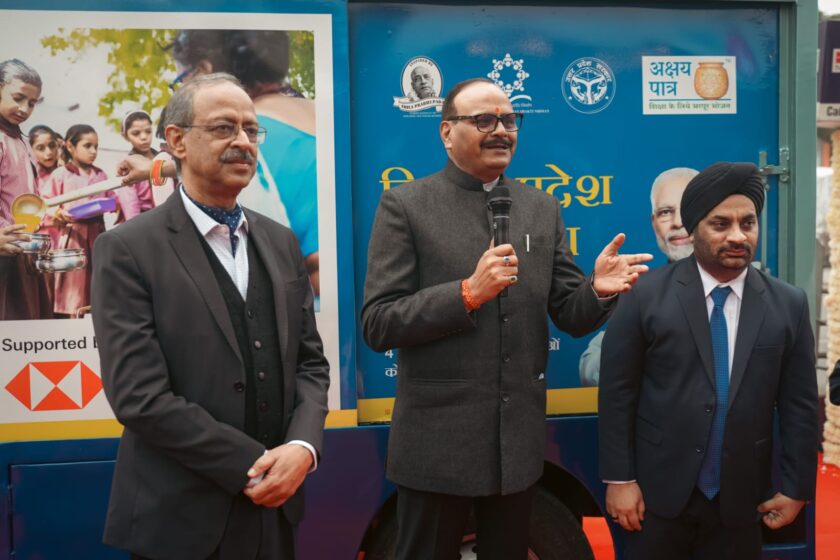Patna: In the sweltering heat of Bihar’s political arena, where alliances shift like monsoon winds and caste equations dominate the discourse, one figure has emerged as both enigma and disruptor: Prashant Kishor. Once the invisible architect behind some of India’s most seismic electoral victories, Kishor now steps into the limelight as the founder of the Jan Suraaj Party (JSP), contesting all 243 seats in the 2025 Bihar Legislative Assembly elections. With the Election Commission’s announcement on October 6 and polls scheduled for October–November, the state is bracing for a triangular contest: the ruling National Democratic Alliance (NDA) led by Nitish Kumar’s JD(U), the opposition Mahagathbandhan (MGB) led by Tejashwi Yadav’s RJD, and Kishor’s JSP. The question lingers: can a man who once operated behind the scenes now upend the established order and capture Bihar’s fractured electorate?
From Buxar to the World Stage
Kishor’s journey is a study in reinvention, rooted in his Bihar origins but forged in the crucible of global public health and Indian electoral strategy. Born in 1977 in Rohtas district to a physician father, he grew up in Buxar, completing his schooling there before pursuing medicine at Patna Medical College. Yet, medicine was merely a prelude. By 2003, Kishor had pivoted to public health, joining the United Nations World Food Programme, managing logistics in conflict zones like Sudan and Iraq. These years honed his abilities in crisis management, data-driven decision-making, and grassroots mobilization—tools that would later define his political playbook.
Returning to India in 2011, Kishor founded Citizens for Accountable Governance (CAG), a non-profit that doubled as an election consultancy. His early work was understated but pivotal. The 2012 Gujarat Assembly elections saw Kishor introduce innovations like “Chai Pe Charcha” and 3D hologram rallies for Narendra Modi, humanizing the then-Chief Minister and contributing to a BJP victory that shocked many political observers.
The 2014 Lok Sabha elections cemented Kishor’s reputation. As Modi’s chief strategist, he orchestrated a digital blitzkrieg, integrating social media virality, youth outreach, and a resonant narrative of “achhe din” to deliver an absolute majority—the first since 1984. Yet, Kishor’s genius lay not just in strategy but in ideological fluidity. He was not beholden to any party. In 2015, he brokered the unlikely alliance between Nitish Kumar and Lalu Prasad Yadav’s RJD in Bihar to form the Mahagathbandhan, crafting the “Bihar Mein Badlav” slogan that mobilized anti-incumbency sentiment and record youth turnout, delivering the alliance 178 seats and stunning the political establishment.
Subsequent victories in Andhra Pradesh with the YSR Congress in 2017 and West Bengal with Mamata Banerjee’s TMC in 2021 reinforced his status as India’s premier election strategist.
The Birth of Jan Suraaj
But by 2022, Kishor grew restless. Frustrated with the label of a “rent-a-strategist” and dissatisfied with the BJP’s handling of farmers’ protests, he publicly refused election assignments in Uttar Pradesh. That year marked the inception of Jan Suraaj Party—not just a political outfit but a movement promising governance over caste politics. Kishor embarked on a 3,000-km padyatra across Bihar, mapping voter sentiment in all 243 constituencies. The strategy was both symbolic and practical, emphasizing grassroots engagement, inclusive policies, and accountability, and signaling a transition from strategist to political player.
By mid-2024, JSP had contested bypolls in four seats, winning one in Tarari, while polling respectably in the others. For a party barely two years old, this was a significant foothold. Kishor’s rhetoric is unapologetically bold: “My party will either finish first or last—there’s no middle ground.” In a state traditionally dominated by caste loyalties, his audacity positions him as Bihar’s ultimate political disruptor.
Bihar 2025: A Cauldron of Discontent
Bihar’s 243-seat assembly, with 130 seats reserved for Scheduled Castes and Tribes, remains a battleground dominated by caste arithmetic. Yadavs (14%), Extremely Backward Classes (EBCs, 36%), Dalits (16%), and Muslims (17%) collectively determine the outcome. Nitish Kumar, at 74, maintains power through constant alliance recalibrations, but anti-incumbency shadows the NDA. JD(U)’s tally of 43 seats in 2020 belied internal fissures. Kishor predicts JD(U) may crumble to under 25 seats, staking his political credibility on this forecast.
Unemployment hovers at 7.6%, and youth migration—over 2 million Biharis leaving annually—fuels frustration. Tejashwi Yadav’s Mahagathbandhan seeks a comeback, but dynastic baggage and past unfulfilled promises (87,000 jobs delivered out of a 10-lakh pledge) shadow its campaign. JSP, polling between 8–12%, threatens to siphon 10–15 seats from both fronts, potentially becoming kingmaker in a hung assembly.
A C-Voter survey places Kishor as preferred Chief Minister for 23% of voters, trailing Tejashwi (28%) but ahead of Nitish (15%), particularly among urban youth and EBCs. In VoteVibe tracking, while 50% see JSP as a “vote-cutter,” 10% envisage Kishor claiming power.
The Alchemy of Strategy and Symbolism
JSP’s allure lies in its combination of strategy, symbolism, and substance. Kishor’s election machinery leverages data analytics, AI-driven voter profiling, and micro-targeting, tools that far outpace traditional door-to-door campaigns or WhatsApp propaganda. His padyatra wasn’t mere optics—it mapped aspirational pockets dissatisfied with unkept promises, freebies, and outdated welfare schemes.

The JSP manifesto is equally calculated. It promises merit-based recruitment, education funding via scrapping prohibition, and a caste census “White Paper”, targeting voters prioritizing jobs over caste. His “40-20” formula—courting 40% Hindus and 20% Muslims while avoiding polarization—disrupts traditional caste silos. In urban and educated constituencies, surveys suggest strong traction, particularly among 25–35-year-olds disillusioned with dynastic politics.
Kishor’s oratory blends Bhojpuri idioms with policy wonkery, appealing to rural voters while resonating with urban migrants returning through the “Bihar First” narrative. Aggressive campaigns, such as “Op Sindoor”, expose alleged corruption in JD(U), framing the NDA as looters surrounding a helpless Nitish. Social media engagement corroborates this impact, with hashtags like #PrashantKishor eclipsing #NitishKumar in reach.
Inclusive Politics and Ticket Distribution
JSP’s ticket distribution signals an inclusive approach. Of 243 candidates, 75 are from EBC communities, Dalit leaders occupy prominent posts, and JSP actively promotes women candidates. Kishor’s outreach to Muslims, combined with seat-sharing arrangements in Muslim-heavy constituencies, neutralizes threats from AIMIM and consolidates anti-NDA votes. Surveys indicate this strategy could potentially consolidate 60% of votes if Hindus and Muslims align behind the party—a demographic critical for electoral success.
Risks and Challenges
Yet Kishor faces formidable hurdles. A solo run could stretch resources, potentially limiting JSP to 30–40 seats. Fragmentation due to smaller parties like LJP(RV) and RLJD adds complexity, while anti-incumbency sentiment, though strong, may not translate to uniform swings across districts. The Special Intensive Revision of rolls, adding 1.5 crore new voters, introduces further uncertainty, particularly in constituencies with high youth turnout.
Turnout could be decisive. In 2020, voter participation was 57%; if youth enthusiasm spikes to 65%, Kishor could transform the electoral map. The question remains: will JSP act as a kingmaker or claim the throne itself?
The Outsider-Insider Edge
Kishor embodies a rare combination: a native son with outsider credibility. Untainted by Bihar’s entrenched dynastic politics, he can champion governance reforms without the baggage of past controversies. Unlike JD(U) and RJD’s reliance on welfare populism and caste loyalties, JSP promotes “professional governance”, echoing Kishor’s UN-era ethos.
Kishor also embraces transparency. He disclosed ₹11 crore earned per advisory role publicly, signaling ethical forthrightness, contrasting with opaque traditional political funding. This transparency bolsters his appeal among educated voters and urban professionals, particularly first-time voters looking for credible alternatives.
A New Political Calculus
The 2025 Bihar elections are shaping up as a fractured mandate. Nitish’s JD(U) grapples with internal divisions and anti-incumbency. RJD’s dynastic baggage and incomplete promises limit its growth. JSP, despite being a nascent party, threatens to redraw alliances and disrupt calculations. If Kishor captures 50 or more seats, he could not only kingmake but potentially claim the Chief Ministership, ending decades of entrenched political rivalry in Bihar.
From UN tents to Patna podiums, Kishor’s trajectory underscores one truth: a strategist who knows when to step forward can often steal the show. In a state long starved of fresh leadership and novel ideas, Bihar may just bet on this dark horse. His success or failure will not only determine the fate of JSP but could redefine Bihar’s political culture, emphasizing governance, accountability, and inclusivity over traditional caste-based calculations.
As the election machinery gears into motion and campaign trails blaze across the dusty lanes of Gaya, Darbhanga, Patna, and beyond, one thing is certain: Prashant Kishor is no longer merely the architect of others’ victories—he is the player rewriting Bihar’s political script. Whether as disruptor, kingmaker, or unlikely victor, his gamble is poised to redefine the state’s political dawn.





